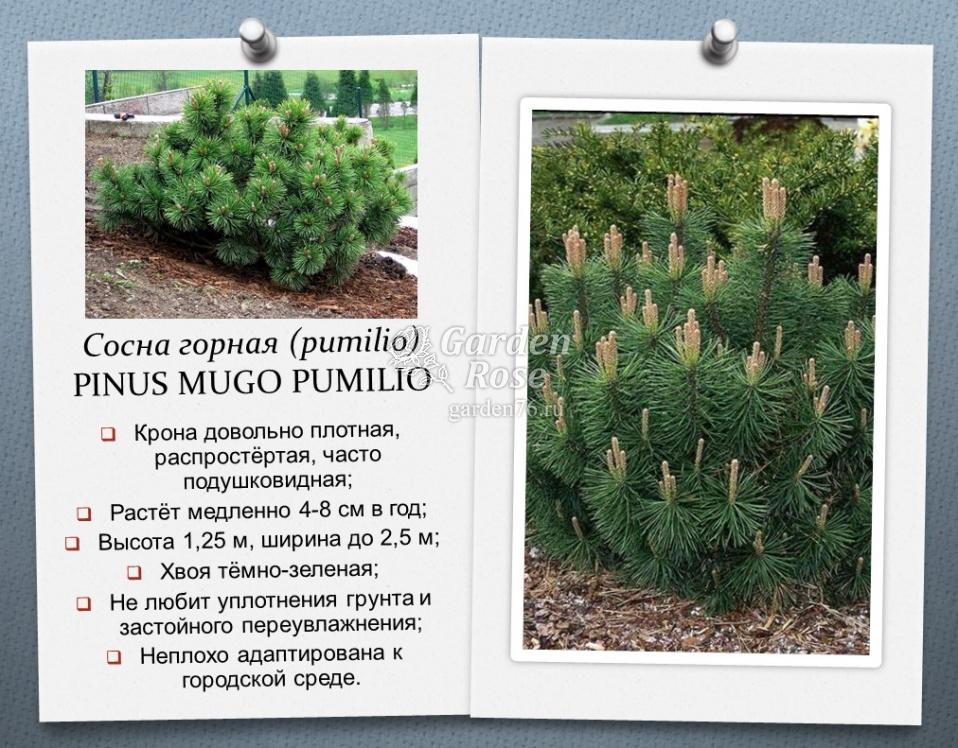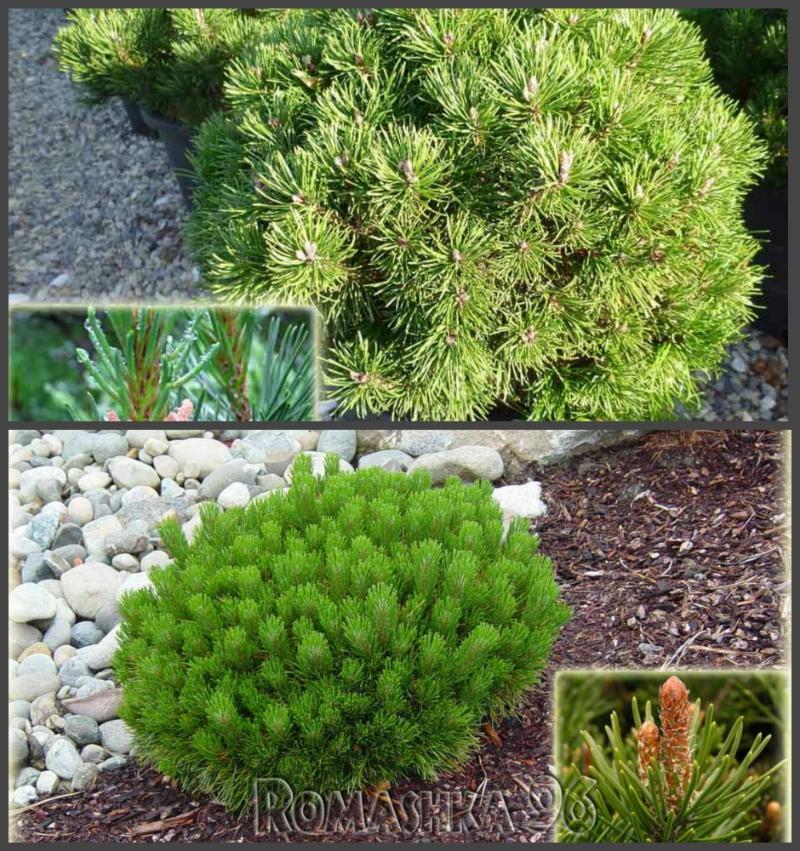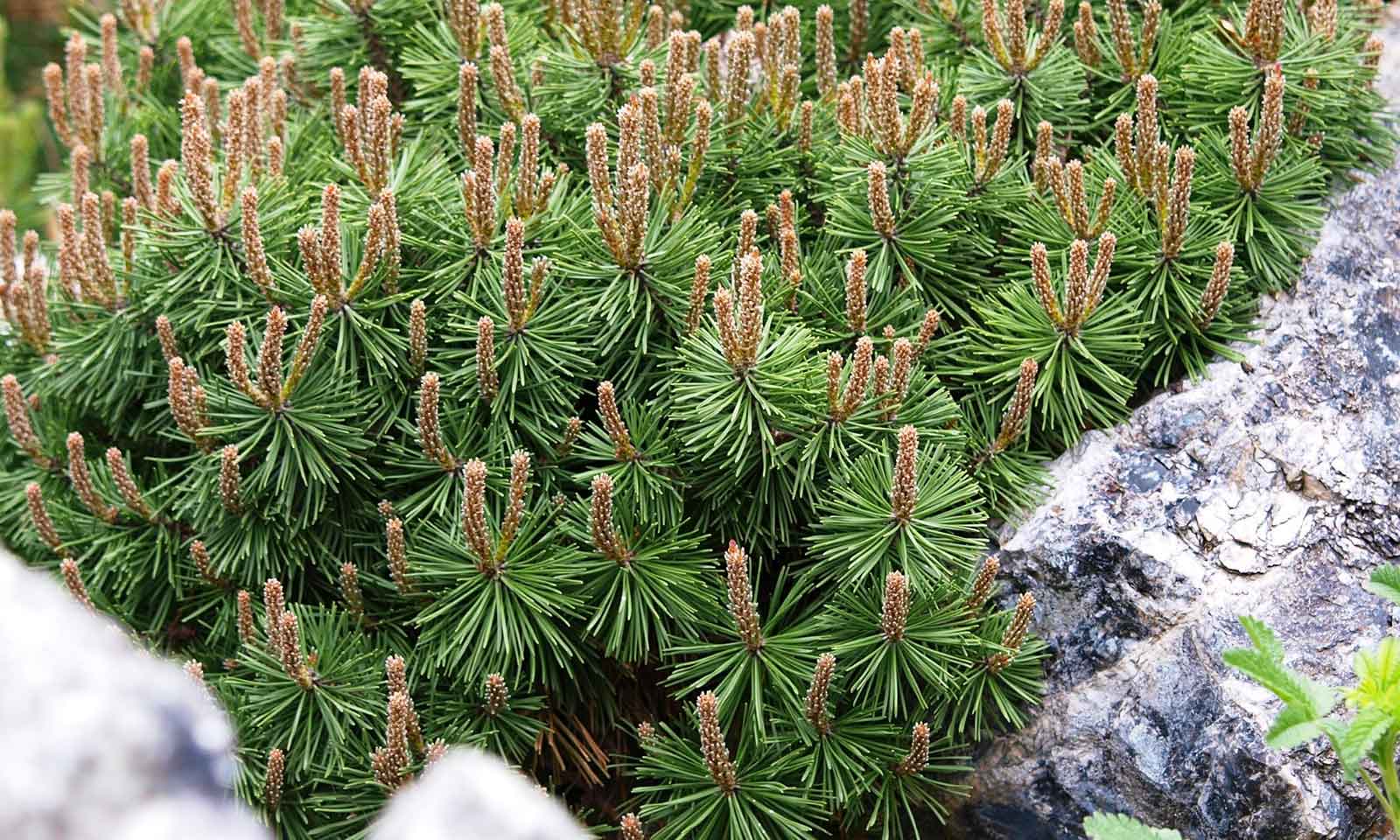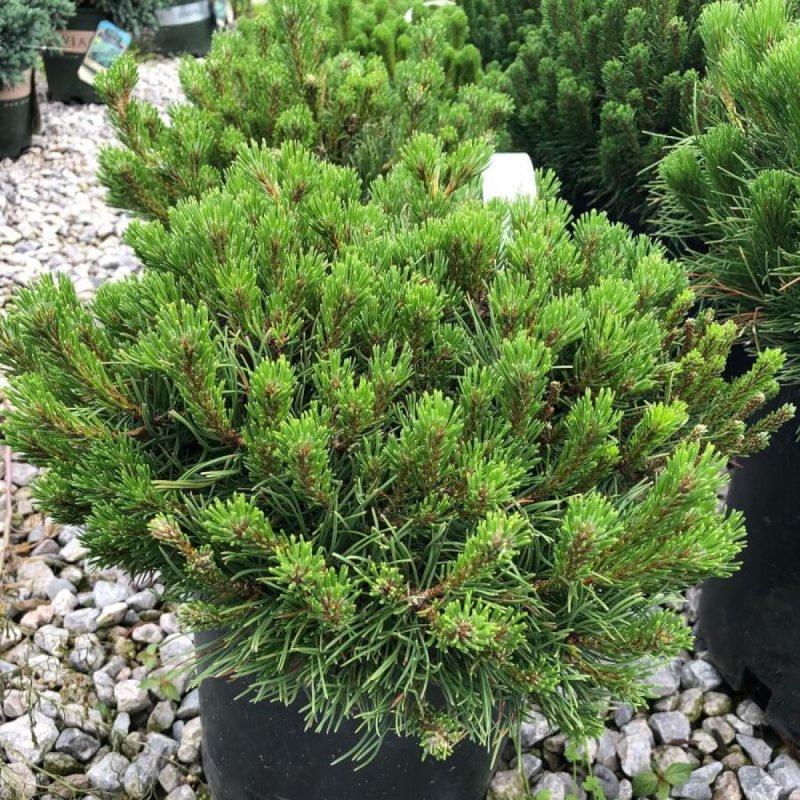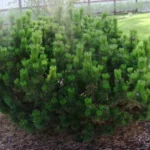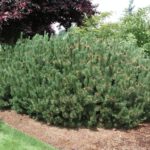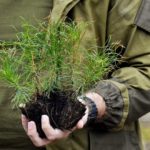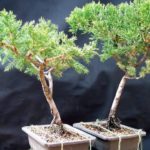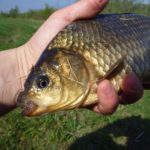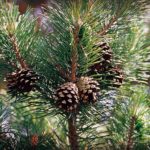Pumilio and Mugus are natural forms of pine trees. The formation of these varieties is due to the fact that mountain pines have a vast growing area. In some conditions the tree becomes taller and spreading, while in others it becomes low and compact. At the same time, the differences between the mountain pines Pumilio and Mugus are of interest to many gardeners. They must be taken into account when choosing a specific type.
Description of Mugusa
This culture is highly flexible, which makes it popular among designers.It can have the following varieties:
- shrub with a volume of 2x2 meters;
- small tree with one trunk;
- elfin wood that spreads along the ground.
The Mugus pine is characterized by the following features:
- Ball-shaped crown - to decorate the area, you can give the plant a carpet shape.
- Dense needles - in spring they are light green in color, and by winter they become darker.
- Twisted needles grow in pairs. They reach 4 centimeters in length. The lifespan of needles is 6-8 years.
- Short shoots, bent upward - after some time they acquire a rough texture and light brown color.
- Cone-shaped cones of a golden hue appear at the ends of young shoots. Fruits are formed on trees older than 7 years.
- Scaly ash-brown bark - as the tree ages, it becomes covered with brown growths. This is considered an important characteristic of all rocks.
- A highly branched root system - thanks to this, pine can grow in unfavorable conditions that are typical for mountainous areas.
Difference from Pumilio
Both crop species belong to the genus Pinus and the family Pinaceae. The Pumilio pine is characterized by the following features:
- the height is 1.5 meters and the diameter is 3;
- branches are covered with long needles;
- the cones are cone-shaped and are formed at 6 years of age;
- the tree can withstand heat and cold very well;
- the crop can grow in any soil.
Comparing Mugus and Pumilio pines, it is difficult to answer which type is better. Before planting, it is important to familiarize yourself with the main differences between these plants:
- mountain pine Mugus exceeds Pumilio by 0.5-1.5 meters;
- the dwarf variety Pumilio is characterized by a denser crown;
- Pumilio pine seeds are distinguished by earlier ripening.
How to plant trees
In order for plants to develop normally, it is important to carry out planting work correctly. In this case, it is worth considering a number of recommendations.
Selecting a location
Planting plants in a summer cottage should begin with choosing a location. In this case, it is recommended to take into account the requirements of pine trees for growing conditions. The landing site must meet the following criteria:
- Lighting – Pine requires full sun most of the day. In this case, partial shade is permissible for a maximum of 2-4 hours a day.
- Soil – the crop needs sandy, loamy, clayey soil with an acidic reaction. It is important to consider that when grown in alkaline soil, the needles of the plant become yellow in color.
- Drainage - the plant requires loose, permeable soil without stagnant moisture.
- Sufficient space for planting - it is important to maintain a spacing of 2-3 meters between trees.
Soil preparation
First, it is important to check the drainage condition of your site. To do this, you need to dig a hole about 40 centimeters deep and fill it with water. With good drainage, after 12 hours all the water will be absorbed and the hole will remain empty.
To plant a pine tree, it is recommended to do the following:
- Dig a hole twice the size of the container or root layer. It is important that a person’s palm is placed between the walls and roots.
- Save the excavated soil. It will be needed to fill the hole after planting the pine tree. If the soil is not very fertile, it is worth adding compost or sod. Coarse sand should be added to heavy soil.
- Loosen the bottom and walls of the recess. This will improve the growth of the root system in depth and width.
- Lay out a layer of drainage. For this, it is permissible to use crushed stone, crushed brick or pebbles.
- To plant a tree. This must be done to the same depth at which it grew in the container.It is important to avoid deepening the root collar, as this will negatively affect the development of the crop and provoke the development of root rot.
- Place the tree in the hole, cover it halfway with soil, crush it and water it. At this stage it is important to make sure that the tree is standing straight and in the center of the recess.
- Cover the hole with soil to the desired level.
- Compact the soil to remove air pockets and ensure root contact with the soil.
- Water the planting site well. When the soil settles, it needs to be added and a border should be made at the border.
- Cover the tree trunk circle with a mulch layer. Its thickness should be 5-10 centimeters.
Is care needed?
In order for mountain pines to develop normally, they need to be provided with high-quality care. It must be comprehensive.
Features of watering
Newly planted trees should be watered every few days to keep the soil completely moist but not soggy. Conifers have difficulty withstanding excessive dryness and stagnant moisture. A month after rooting, the plantings need to be watered every day. This should be done in the absence of natural precipitation. Mature pines need moisture only during prolonged drought.
Top dressing
When applying fertilizer for the first time, it is recommended to use 100-200 grams of NPK 10:10:10 per 1 square meter of tree trunk circle. Subsequently, the amount of fertilizer is calculated depending on the diameter of the trunk. For every centimeter you need to use 80 grams of nutrients.
Shaping and trimming
The types of pine trees in question do not need to be pruned. However, many gardeners carry out this procedure to limit the size of the tree and give it an attractive shape. However, you should not carry out the procedure in the fall.
Tree pruning is recommended to be done in the spring. To do this, the candles at the ends of the branches are cut into 2 parts, which reduces growth during the season. This helps maintain the desired crown size and makes it thicker and more lush.
For these types of pines, a smooth and rounded shape is ideal. If individual shoots violate the correct contours of the plant, they can be pruned. If thinned areas have formed in the crown, it is worth leaving without pruning the new growth that will fill the voids after some time.
Pine transplantation and propagation
It is recommended to replant only plants older than 6 years. To do this, do the following:
- Carefully dig the plant out of the ground. In this case, as much soil as possible should remain on the roots. Without soil, the root system dries out quickly.
- Dig a hole that is larger than the root system of the tree being transplanted.
- Add drainage.
- Pour out the mixture of sand, turf and peat. It is recommended to mix these components in equal proportions.
- Gently compact the soil and form a hole.
- Water the plant generously with water.
It is recommended to propagate pine in the following ways:
- Seeds. They must first be stratified.
- Vaccination. This procedure is considered quite complicated. It can only be carried out by an experienced specialist.
To graft a mountain pine onto a Scots sapling, it is recommended to do the following:
- Remove needles from the trunk and rootstock in the grafting area.
- Use a knife to cut through the bark to clearly see the green layer of cambium. This part is used for splicing.
- Cut off the bark for the rootstock.
- Combine the grafting material with the trunk of the main plant. In this case, it is important to ensure that the sections have the same height and are in contact with the cambium layers.
- Tie the scion with a special elastic band. After some time, under the influence of external factors, the material will decompose.
- Fill the joints with wax. This will help avoid the development of pathologies.
Disease Prevention
Mountain pines have strong immunity. But if the rules of care are violated, there is a risk of developing dangerous pathologies. The most common diseases and parasites that affect these plants include:
- Blistering rust. This fungal disease develops in the fall and causes yellowing of the needles. After which the infection enters the young branches and trunk, causing orange swellings on them. Copper-based chemicals are used for treatment - “Abiga-Pik”, “Artserid”.
- Scleroderriosis. As pathology develops, the tops of young branches suffer. In this case, the affected needles become brown and fall off. To cope with the disease, you should use Bordeaux mixture or copper sulfate.
- Bark beetles. When pine trees are infected by these pests, sawdust appears on the ground. Beetles eat plant bark. To destroy parasites, you need to use a product such as Bifenthrin. This should be done from mid-spring until the coldest weather.
- Aphid. This pest absorbs pine sap and causes the tree to dry out. When attacked by parasites, the needles become covered with a white layer. After some time, the crown turns yellow and falls off. To destroy aphids, the affected areas should be treated with Decis or Karbofos.This is done monthly throughout the season.
Pumilio and Mugus are fairly common types of mountain pines, which have certain characteristics and differences. Therefore, before planting a specific crop on your site, it is important to read its description.

